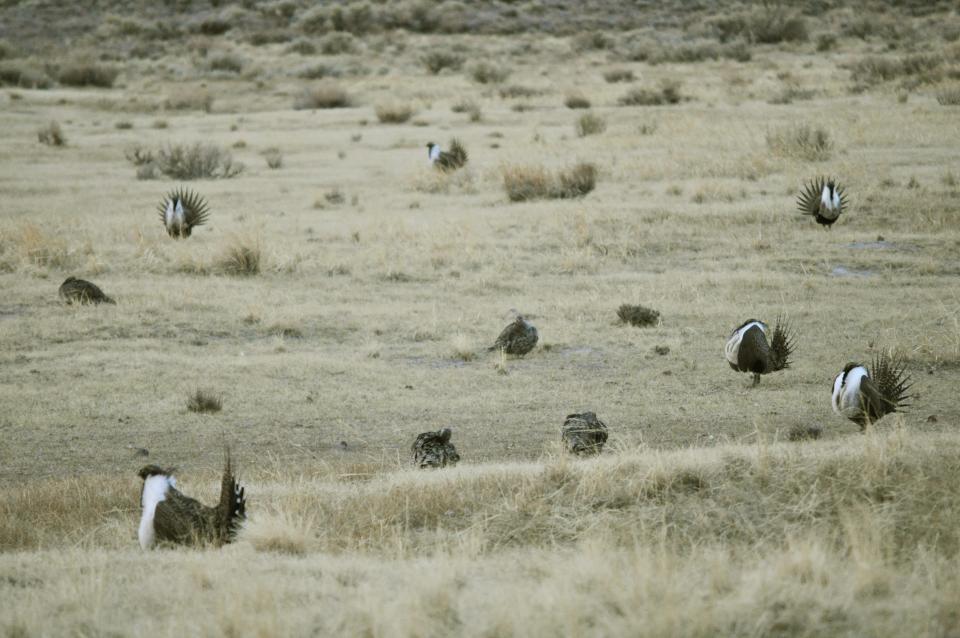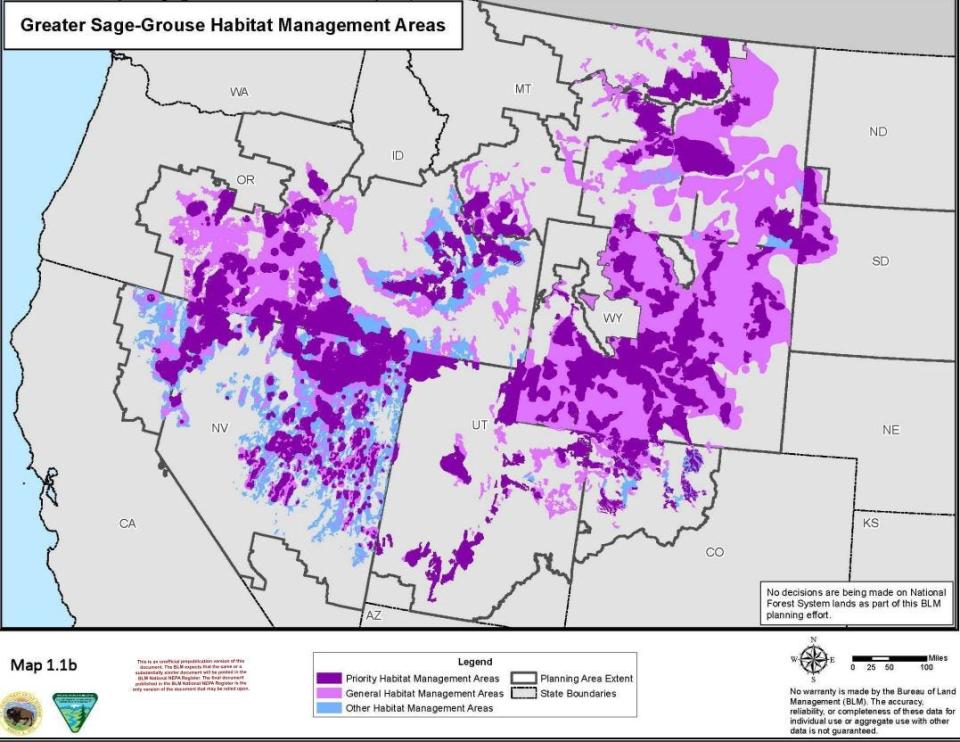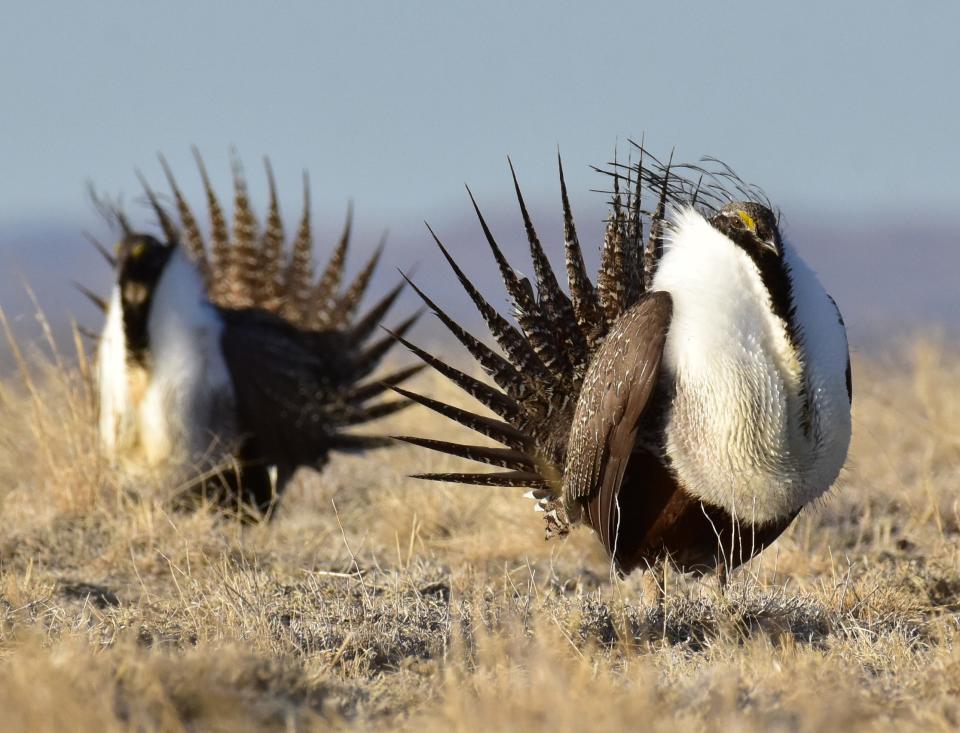Sage grouse management plan draws controversy over western high plains
The U.S. Bureau of Land Management has released a draft management plan for the Greater Sage Grouse, which could tighten conservation and management practices on more than 11 million acres of sagebrush steppe habitat across the western United States. In Montana and the Dakotas, more than 726,000 acres were identified as potential Areas of Critical Environmental Concern (ACECs) due to the sage grouse habitat they provide.
The Greater Sage Grouse is an iconic species of the upper western United States, best known for the males’ elaborate mating display that occurs each spring from late March into May. Dozens of males puff out their chests and fan their tail feathers trying to attract females, while gurgling their bulbous yellow air sacs and strutting around the dance ground called a ‘lek.’

The BLM's announcement has been anticipated since 2019 when the agency last updated its Sage Grouse management plan. If implemented it could have significant impacts on oil and gas drilling and livestock grazing across the American west.
According to the BLM, Greater Sage Grouse populations once numbered into the millions, but habitat loss, increasing wildfires and invasive species have reduced their number to fewer than 800,000 today. A March 2021 study by the U.S. Geological Survey found an 80% decline in the bird’s population throughout its range since 1965, with half of that drop occurring since 2002.
Related more: Great Falls approves $2.2M to convert Civic Center ballroom into courtrooms
“Greater sage grouse rely on sagebrush lands for all aspects of their life cycle to meet seasonal needs for food, cover and reproduction,” the BLM news release from March 14 states. “A local population may need up to 40 square miles of intact landscape to stay healthy. Protecting and restoring sagebrush on BLM-managed public lands across the west is critical not just for greater sage-grouse, but also for the health of western communities and other iconic western species that rely on healthy sagebrush, including mule deer, pronghorn, and the pygmy rabbit.”

Debate on how to best preserve the remaining sage brush habitat of the American west has gone on for decades. In 2015, the Obama Administration adopted a management plan that would have potentially redesignated some core sage grouse territory as “areas of critical environmental concern.” That designation would have added new restrictions on energy development, cattle grazing, and recreational activities across hundreds of thousands of acres. That proposal was amended in 2019 under former President Donald Trump.
The more than 600-page proposal includes multiple alternatives. Revisions could include seasonal restrictions curbing oil and gas drilling during sage grouse mating or brood rearing seasons and larger buffers around breeding grounds. These moves also could end up restricting where new wind and solar farms are sited, setting up a potential conflict with Biden administration efforts to expand commercial-scale renewable energy development on federal lands.
On Thursday the American Exploration & Mining Association filed a lawsuit alleging that the BLM and Forest Service plans unlawfully restricted mineral exploration on millions of acres of federal lands in California, Idaho, Montana, Nevada, Oregon, Utah, and Wyoming and failed to provide adequate public comment. The BLM has opened public comment on the sage grouse proposal through June 13 at blm.gov/sagegrouse. A final environmental impact statement is expected this fall.

Cattle ranching organizations have also expressed concerns about the potential changes to BLM rangeland management.
“There are proposals that will impact millions of acres across 10 different states.” said Sigrid Johannes, National Director of the National Cattlemen’s Beef Association’s government affairs office. “A 90-day comment window is laughable. The BLM needs to extend the comment period to allow for full, informed public engagement,"
"We're still analyzing the hundreds of pages of text, but what we'll be looking for is a strong acknowledgment of the reality that science has proven time and time again, most recently in a 10-year study conducted by the University of Idaho, responsible livestock grazing is fully compatible with sage grouse populations,” Johannes added. “Livestock grazing strengthens sage grouse habitat. Restrictions, especially those based on outdated science, will not help conserve this species."
Conservation organizations have taken a different outlook, many of whom have applauded the BLM for taking a more proactive rangeland conservation approach.
A 2022 U.S. Geological Survey report revealed that half of the original sagebrush ecosystem has been lost at a rate of approximately 1.3 million acres each year over the last two decades.
“The sagebrush ecosystem is the largest terrestrial biome in the Lower 48 at over 165 million acres spanning 13 Western states,” says a statement from the Theodore Roosevelt Conservation Partnership headquartered in Missoula, Montana. “It is home to the iconic greater sage grouse as well as numerous other fish and game species. This continued collaboration is critical to reverse the trend of significant habitat loss, which impacts individual species like the greater sage grouse, as well as communities across the West.”
The BLM’s draft environmental impact statement and plan amendments opened for public comment on March 15, 2024. The comment period will end on June 13, 2024. More information on how to comment on this draft can be found at https://www.blm.gov/sagegrouse. A final environmental impact statement is expected this fall.
This article originally appeared on Great Falls Tribune: Grouse management plan draws controversy over western land management.

